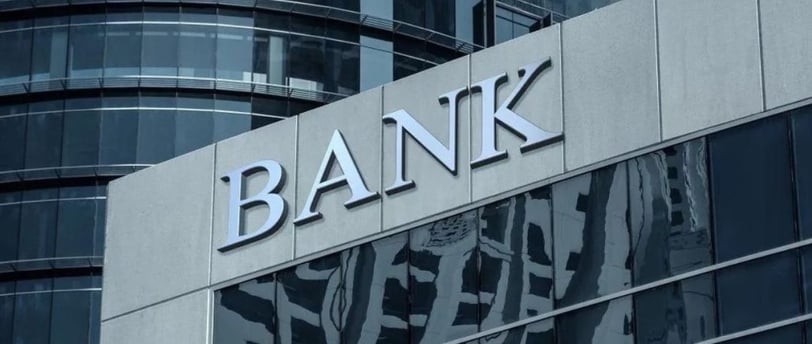Add your promotional text...
PSU Banking Stocks: Is the Recent Dip a Golden Buying Opportunity
Synopsis: In the past month, shares of major PSU banks like SBI, Union Bank of India, and UCO Bank have fallen by up to 8%, leading investors to question whether now is the right time to invest. Despite recent market corrections, analysts maintain a positive long-term outlook for PSU banking stocks, citing robust credit growth and government support. This blog delves into the recent performance of these stocks, the challenges they face, and why the current dip could present a lucrative buying opportunity for long-term investors.
VIEWS ON NEWS
By Monika Agarwal
8/21/20243 min read


The Indian stock market has been on a remarkable upward trend, with Public Sector Undertaking (PSU) banking stocks contributing significantly to the rally. However, in the past month, shares of several PSU banks, including State Bank of India (SBI), Union Bank of India, and UCO Bank, Bank of India have experienced a downward correction, falling up to 8%. This has led investors to wonder whether this is a good opportunity to buy into these stocks or if caution is warranted.
Recent Performance of PSU Banks
Despite the broader bullish sentiment in the market, PSU bank stocks have recently faced some headwinds. The PSU Bank index, which tracks the performance of public sector banks, was down by over 0.6% in a recent trading session, reflecting mixed market momentum. While stocks like Central Bank of India, Bank of Maharashtra, and Indian Overseas Bank managed to stay in the green, others, including Punjab National Bank (PNB), Bank of Baroda, and Union Bank of India, saw minor losses. SBI and UCO Bank have also been part of this decline, raising concerns among investors.
The decline in these PSU bank stocks comes after a period of strong performance. Over the past year, PSU banks have rewarded investors handsomely, with many stocks in this sector experiencing significant gains. However, the recent correction has prompted a re-evaluation of the sector’s prospects.
Analysts’ Take on the Current Scenario
Dnyanada Vaidya, a Research Analyst specializing in Banking, Financial Services, and Insurance (BFSI) at Axis Securities, notes that the PSU banks under their coverage had a relatively stable quarter during Q1 FY25. The growth was primarily driven by the retail and SME segments, while corporate credit growth lagged. However, deposit growth was a concern, with term deposits leading the way as CASA (Current Account Savings Account) ratios continued to decline. This resulted in a slight increase in the Credit-Deposit (C-D) ratio, though PSU banks remain in a comfortable position compared to their private-sector counterparts. Net Interest Margins (NIMs) were compressed due to cost of funds (CoF) pressures, and operating expense ratios moderated as the impact of wage revisions faded. Asset quality trends reflected seasonality, but no significant concerns were raised.
Raj Gaikar, a Research Analyst at SAMCO Securities, highlights the strong performance of PSU banks in Q1 FY25, marked by substantial growth in Profit After Tax (PAT) and a significant reduction in Non-Performing Assets (NPA). PSU banks outperformed private banks in these areas during the quarter. However, the sector faced challenges, particularly in deposit growth, which did not keep pace with loan growth, signaling potential liquidity constraints.
On the other hand, Atul Parakh, CEO of Bigul, offers a more cautious outlook for PSU banks in the near term. He points to the rising credit costs as a concern, though the improvement In cost ratios due to wage revisions is a positive sign. Retail and SME segments continued to drive credit growth, while corporate credit growth remained subdued due to competitive pressures in the banking sector. Parakh also notes that fee income growth aligned with analyst expectations, driven by increased business activities and investments, which, in turn, elevated operational expenses.
Future Outlook for PSU Bank Stocks
Looking ahead, analysts generally maintain a positive long-term outlook for PSU banks, despite the recent correction. Vaidya expects credit growth for PSU banks to remain robust, particularly in the retail and SME segments, with a gradual pick-up in corporate lending. Deposit growth is also anticipated to improve, supporting stable Net Interest Margins (NIMs). Vaidya does not foresee significant asset quality concerns, except in the unsecured segments, which require close monitoring. As a result, she expects PSU Banks to sustain their Return on Assets (RoA) at around 1% over the medium term.
Gaikar concurs, suggesting that the recent short-term correction in PSU bank stocks is constructive, positioning them favorably for long-term growth. He emphasizes that the correction provides a buying opportunity for investors with a long-term investment horizon.
Parakh, while acknowledging the challenges in the near term, remains optimistic about the long-term growth trajectory of PSU banks. He points to increased government support and initiatives, along with the overall growth of the Indian economy, as factors that will drive the sector’s performance in the years to come.
Conclusion: Should You Buy PSU Bank Stocks Now?
The recent decline in PSU bank stocks, presents a potential buying opportunity for long-term investors. While the sector faces near-term challenges, particularly in terms of credit costs and deposit growth, the overall outlook remains positive. The government's support for PSU banks, coupled with the ongoing expansion of the Indian economy, suggests that these stocks could deliver strong returns over the long term.
Investors should, however, be mindful of the risks associated with PSU banks, particularly in the unsecured lending segment. A selective approach, focusing on banks with strong fundamentals and robust growth prospects, may be the best strategy for capitalizing on the opportunities in this sector.
